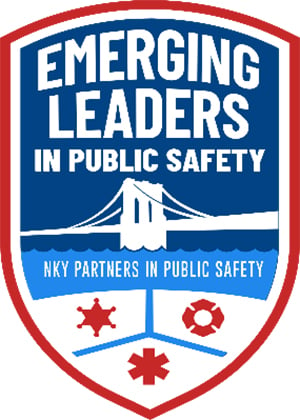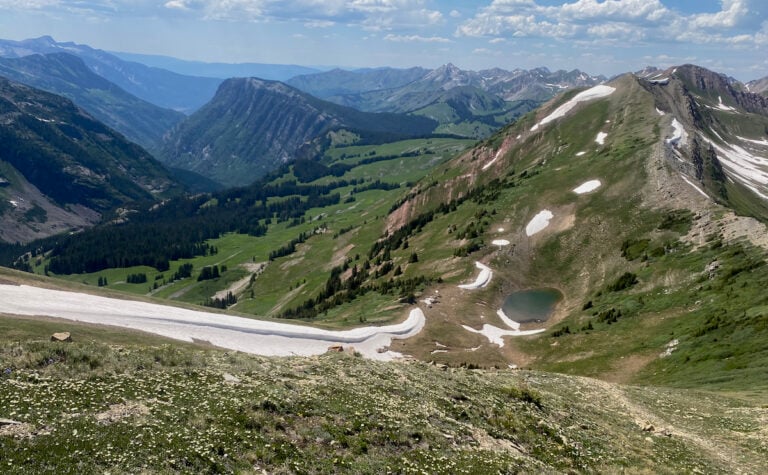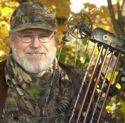A forecast of unseasonably warm weather for the start of November, the month with the highest deer harvest in Kentucky, means hunters won’t have the option of putting off the skinning and butchering of deer carcasses.
In warm weather deer carcasses must be processed as soon as possible to ensure good-tasting venison.
It’s okay to hang a field-dressed deer overnight with the skin on if the air temperature is below 50 degrees. But, if the temperature, day or night, will remain 50 degrees or higher, the deer must be skinned and butchered immediately.
Deer hunters who are camping are especially challenged by warm weather.

Deer carcasses must be cooled down fast. After field dressing the deer, rinse out the body cavity with water. Then hang the deer up by its hind legs on a gambrel, and skin it. Rinse the carcass again, and cut away any blood shot meat.
The best way to beat the heat is to butcher the deer immediately, cutting off the tenderloins, backstraps, tip steaks, and de-boning the rest of the hind legs (hams). Place these boneless cuts in freezer bags and put them in an cooler full of ice.
The front shoulders of the deer, unless damaged by arrows or bullets, are best when immediately grilled on a spit over the campfire. Just cut off a chunk of the smoky meat with your knife, and eat your snack around the fire, primitive style.
If a skinned deer must be hung for a short period of time at camp before butchering, put a cotton carcass bag over the deer to keep off the flies.
Hunters driving home after hunting, or taking their deer to a commercial deer processor, should take precautions, too, so that their venison won’t get overheated. Pack the body cavity with bags of ice and wrap the deer carcass in a tarp, secured with ropes. This will keep the cool in and bugs out.
Hunters who are able to bring their deer back to the house within minutes of it being field dressed, have the luxury of hanging up their deer and rinsing out the body cavity with a high-pressure nozzle on a garden hose. Skin the deer and cut it up, placing the de-boned meat in plastic bags in the refrigerator, until it can be wrapped up for the freezer.
Trophy Care
A buck that is going to mounted by a taxidermist also requires special handling in the field, especially in warm weather.
It’s the hunter’s responsibility to give the taxidermist the best possible product to work with, to increase the likelihood of a quality mount.
Here’s some tips:
* Have a taxidermist in mind, so you’ll know where and when you can drop off a deer. Store the taxidermist’s phone number in your cell phone.
* When field dressing, don’t cut open the chest cavity if you plan to have a shoulder mount, and never slit the throat to bleed the deer.
Remove the internal organs by making a cut from the end of rib cage to the anus. Don’t split the ribs, cut the diaphragm and reach into the buck’s chest to remove the heart, lungs and esophagus (wind pipe).
* Be careful when dragging out the deer. Grab it by the antlers and elevate the front of the deer, to avoid damaging the hide and individual hairs, on the neck and brisket. Never drag a deer that’s going to be mounted by its hind legs.
If possible, use a truck, tractor or ATV to get the deer out of the field as fast a possible.
* Never hang any buck to be mounted head first. Use a gambrel and hang it by the hind legs. Hanging a deer by the neck or antlers can stretch and damage its hide. Rinse off any blood coming from the buck’s mouth and nostrils to prevent staining the hair on the deer’s face or cape.
* For best results, take the entire field-dressed deer to your taxidermist for caping.
Some damage to a hide can’t be fixed, and skinning around the deer’s delicate eyes, nose, lips and ears is best left to an experienced taxidermist.
Venison is the Best Free-Range Meat Available
All this work processing a deer is well worth it.
Venison as tablefare is unmatched. It’s the original local, free-range red meat, with fewer calories than beef or pork, and less cholesterol than chicken.
According to the USDA, a serving of three ounces of venison has 133 calories and only about seven grams of fat. This includes more than four grams of monounsaturated fats, which can help lower bad cholesterol levels and reduce the risk of heart disease and stroke if eaten in moderation, according to the American Heart Association.
Venison is a good source of protein, too, as well as vitamins B12, B6, B3, and B2, and trace minerals – phosphorous, selenium, zinc, and iron.
Deer in the wild are also free of the growth hormones and antibiotics that commercial beef cattle typically receive when they are fed corn and other grains while being “finished” in feed lots.
The best cut of meat on a deer is the tenderloins, long, tender muscles inside the chest cavity, attached to the bottom of the spine.
For more outdoors news and information, see Art Lander’s Outdoors on KyForward.
The second best cut is arguably the backstrap, long, round strips of meat along both side of backbone, just above the ribs.
The deer’s hams, its back legs, are meaty, but tougher. The hams are typically cut into roasts and steaks, ground into burger or cut into chunks for soup or stew.
The best advice is to de-bone all cuts of venison, and remove all the fat and silver skin. Never saw through bones because it spreads marrow across the surface of the meat, which gives venison a gamey taste.
Venison is a versatile meat that can be preserved several ways. When freezing venison, put the cuts in clear plastic wrap or place them in freezer bags, then wrap in freezer paper. This will prevent the meat from being exposed to air so it can be kept in the freezer longer.
For tasty venison steaks, marinate before cooking. Soy sauce-based marinades work great with venison, and can be bought at most grocery stores, or mixed up fresh. For best results, marinate the cuts of meat overnight in a plastic bag in the refrigerator.
For a better burger, chunks of venison that are going to be ground up should be lightly salted, covered in water, and refrigerated overnight. The light salting draws out any blood and strong taste in the meat.
Venison really shines when it’s cooked on a BBQ grill, preferably one that has a lid to hold in the smoke and keep the fire from flaming.
Don’t over cook venison. Venison is best when cooked medium-rare for maximum flavor, and juiciness.
Art Lander Jr. is outdoors editor for NKyTribune and KyForward. He is a native Kentuckian, a graduate of Western Kentucky University and a life-long hunter, angler, gardener and nature enthusiast. He has worked as a newspaper columnist, magazine journalist and author and is a former staff writer for Kentucky Afield Magazine, editor of the annual Kentucky Hunting & Trapping Guide and Kentucky Spring Hunting Guide, and co-writer of the Kentucky Afield Outdoors newspaper column.






















